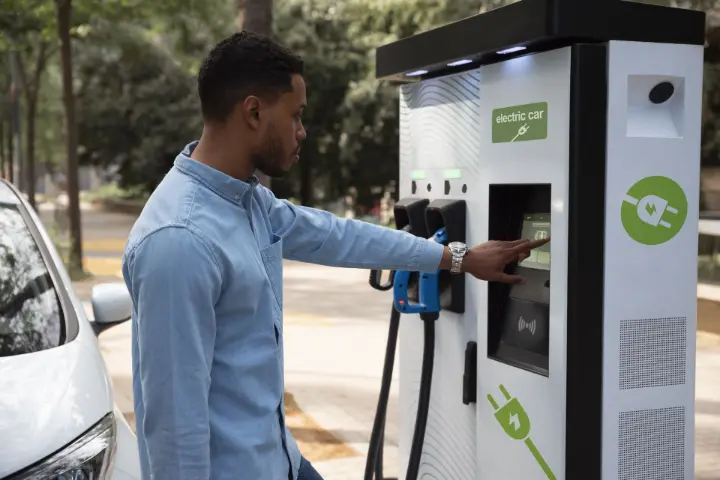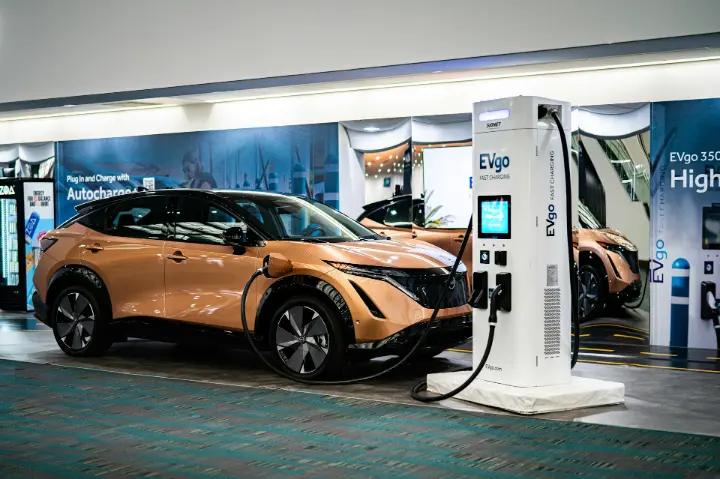In the soft glow of dawn, as Addis Ababa begins to stir, a new kind of engine hums, not one powered by diesel, but by ambition. Along winding roads, electric minibuses glide past, a sign that Ethiopia is trying something bold: not just importing green technology, but growing it from the ground up.
This is Ethiopia’s EV story: of mines, factories, policy shifts, and a vision to reshape how a nation transports itself, powers its economy, and defines its future.

1. The Backdrop: Why Ethiopia Is Betting on EVs
- Import ban on combustion engines: In 2024, Ethiopia imposed a ban on importing internal combustion engine (ICE) vehicles. This move forces the market to look toward electric mobility.
- Massive fuel import bill and foreign exchange pressure: Ethiopia spends over US$4–6 billion annually to import fuel. Switching to EVs reduces those imports, saving foreign currency and stabilizing the balance of payments.
- Abundant clean-power potential: Ethiopia is largely powered by hydropower, and new projects, like the Grand Ethiopian Renaissance Dam, are increasing power availability.
- Mineral wealth: The country holds large lithium deposits (notably the Qenticha mine), tantalum, and other minerals essential for EV batteries.
These threads – policy, natural resources, energy, and economic necessity-are weaving together into a tapestry of possibility for Ethiopia.
2. Key Moves: What Ethiopia Is Doing Now
Here are some of the concrete steps already underway:
- Battery manufacturing strategy: The government is drafting and implementing policies to build a domestic EV battery ecosystem. Batteries currently cost $5,000–$10,000 when imported. Local processing of lithium and production of batteries can reduce this cost.
-
Local assembly and factories:
- Belayneh Kindie Group (BKG) opened a large-scale EV manufacturing plant in Debre Birhan with capacity to build over 1,000 EVs per year (minibuses, cargo trucks, etc.).
- Huajian Group has plans to move from importing EVs to assembling and eventually manufacturing locally.
- Ethio-Engineering Group, a state-owned entity, is also targeting EV production, including local battery manufacturing.
- Incentives and policy support: Duty-free import of EV parts, tax incentives, policies to reduce ICE imports, and setting ambitious EV adoption goals (such as half a million EVs by 2030) are pushing the agenda forward.
- Public transport & early adoption: Local assembly of minibuses, electric buses, public transport providers are starting to take up EVs. There is also experimentation with CKD/CKD (completely knocked down / semi knocked down) vehicles for local assembly.
3. The Opportunities: What Ethiopia (And Africa) Stands to Gain
If Ethiopia gets this right, the upside is large. Here are the major opportunities:
| Opportunity | What It Means | Potential Scale |
| Reduced import bills & foreign exchange savings | Less spending on fuel imports improves macroeconomic stability and frees capital for other sectors. | Billions of USD saved annually. |
| Value addition locally | Instead of simply exporting raw lithium ore, Ethiopia can process minerals, build batteries, and assemble vehicles, keeping more of the value chain within the country. | Jobs in mining, battery plants, and assembly lines; technology spillovers. |
| Job creation & skills development | New industries need engineers, technicians, maintenance, and design experts. | Tens of thousands of jobs in manufacturing, services, and R&D. |
| Green transition & climate goals | Less air pollution in cities, less reliance on fossil fuels, and alignment with global climate targets. | Improved public health; enhanced environmental credentials. |
| Export potential | If production scales and quality meets standards, Ethiopia could serve regional markets. | East Africa and beyond — huge growth potential. |
| Energy independence | Using domestic power generation and minerals reduces energy vulnerability. | Greater resilience to global fuel price shocks. |
4. The Challenges: What Could Hold Ethiopia Back
To realize these opportunities, several risks need to be managed:
- Infrastructure gaps: Charging stations, grid stability, spare parts supply, and battery recyclability are still underdeveloped. Without these, adoption stalls.
- Technology & expertise: Manufacturing EVs and batteries requires high technical standards. There is competition from established players (China, etc.) with economies of scale and technical maturity.
- Financing & capital: Huge capital is required to build factories, processing plants, and infrastructure. Also, foreign exchange constraints can hamper bringing in needed components.
- Regulation & policy consistency: Incentives need to be stable; regulations need clarity. Uncertainty can discourage investors.
- Access & affordability: Even with local production, EVs are still expensive for many Ethiopians. Without financing models or subsidy support, they may remain out of reach.
- Environmental & social impacts: Mining for lithium/tantalum must be done in ways that do not harm communities or ecosystems. Waste and recycling of batteries must be addressed.

5. What This Means for Africa
Ethiopia’s story is instructive for many African nations. Countries with mineral wealth, clean power potential, and industrial aspiration can look to replicate certain parts of this model:
- Using policy levers (import bans, tax incentives) to shift demand.
- Encouraging both domestic and foreign investment, but ensuring that value is added locally (batteries produced, vehicles assembled).
- Ensuring energy supply (power generation + grid) keeps pace.
- Planning infrastructure for charging, service, and repairs.
Ethiopia’s move from imagination to manufacture is more than an industrial strategy; it’s about agency. It’s about a country saying: we will no longer be passive in the global car-or battery conversation. We will build.
There is no guarantee of success, but the signs are strong: policy momentum, mineral wealth, clean energy infrastructure, and early factories.
If Ethiopia overcomes the challenges—finance, expertise, supply chains; it can become not just a consumer of the electric vehicle revolution, but a leader.